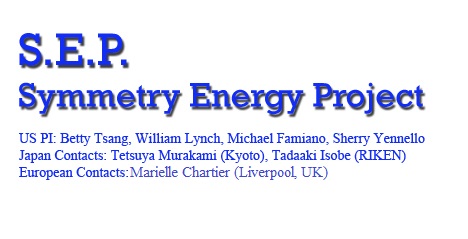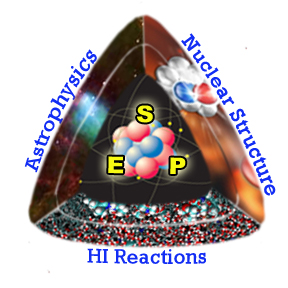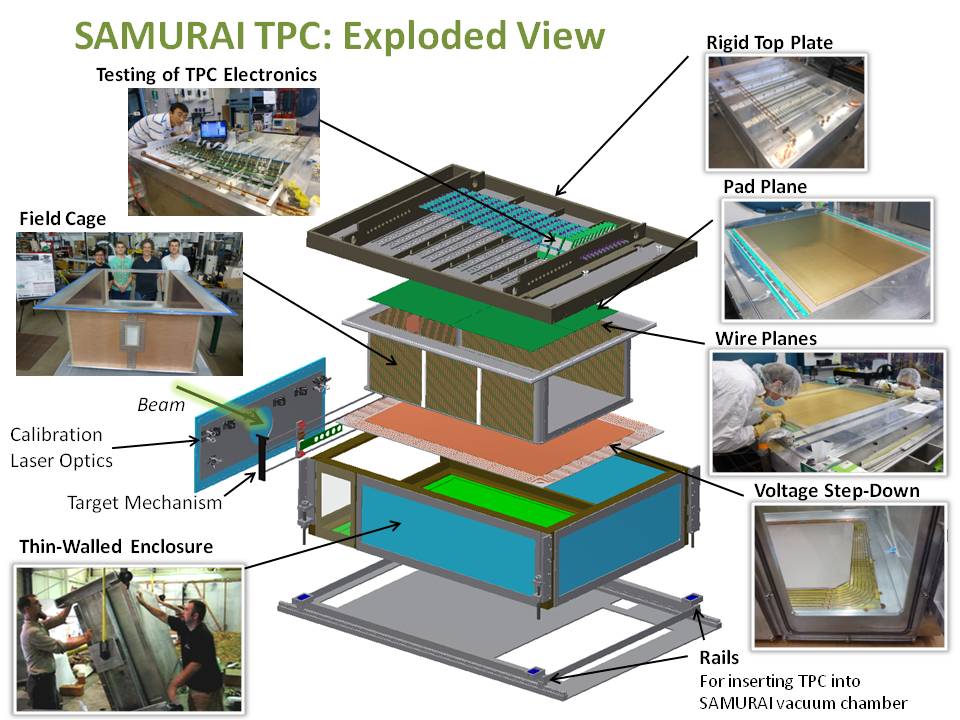1/25/11-------------------------------------------------2/2/11
Phys. Rev. C 86, 015803 (2012)

The Science
Determination of the nuclear equation of state of asymmetric matter and
understanding the nature of dense neutron-rich matter in neutron stars were
identified in the Rare Isotope Science Assessment Committee report, as a key issue
driving the proposed construction of the Facility for Rare Isotope Beams at Michigan
State University. The Symmetry Energy Project is an international collaboration,
consisting of an interdisciplinary, experimental and theoretical team of scientists,
to conduct a series of experiments at unique facilities based in the U.S. (the
National Superconducting Cyclotron Laboratory at Michigan State University), Japan
(the Radioactive Ion Beam Factory at RIKEN) and Germany (GSI, Helmholtzzentrum fur
Schwerionenforschung, GmbH). Each facility enables the exploration of a different
density range. Preliminary constraints have been obtained recently at the
sub-saturation density region. The goal of Symmetry Energy Project is to determine
the density dependence of the symmetry energy beyond the normal nuclear matter
density and to improve the constraints obtained in the subnormal nuclear matter
density regions.
Synergisms of international collaboration
One of the scientific objectives of the Facility for Rare Isotope Beams [FRIB], a $550M accelerator to be built at Michigan State University (MSU), is to understand the "nature of neutron stars and dense nuclear matter" [LRP07]. This goal requires understanding the Equation of State (EoS) for neutron-rich matter over a range of densities. To achieve this scientific objective, we propose to conduct a series of experiments at unique facilities based in the U.S. (the National Superconducting Cyclotron Laboratory (NSCL) at Michigan State University), Japan (the Radioactive Ion Beam Factory (RIBF) at RIKEN) and Germany (the Gesellschaft fur Schwerionenforschung (GSI) at Darmstadt). Each facility enables exploration of a different density range. To conduct and interpret these experiments, we formed a strong international experimental and theoretical team of scientists, based largely at universities with strong records of undergraduate education and graduate training in nuclear science.
Nuclear science is an international effort where many advances require cooperation among scientists across borders. This is particularly true due to the significant infrastructure demands of large accelerators and detector systems. Additionally, many of the theoretical advances are complex and benefit significantly from cross-border collaborations. The proposed research is interdisciplinary, involving nuclear physics and astrophysics. The list of participants in the collaboration, includes well known nuclear theorists and astrophysicists, with expertise vital to interpret the experimental results. By doing experiments in RIKEN and GSI using beams not available in the US, our early career scientists will be working with an international group of scientists and gain experiences working in foreign laboratories. The results and experience from these experiments are essential for continuing EoS research in FRIB.






